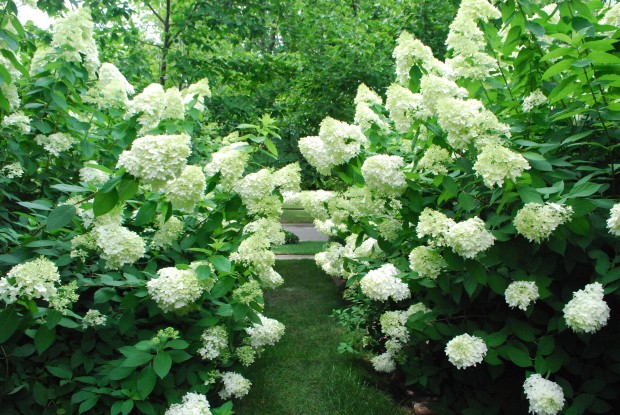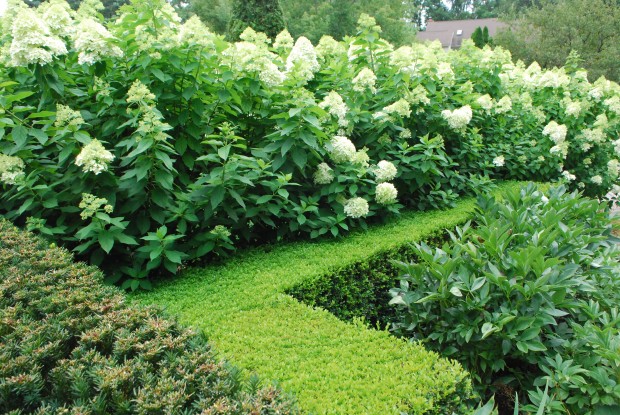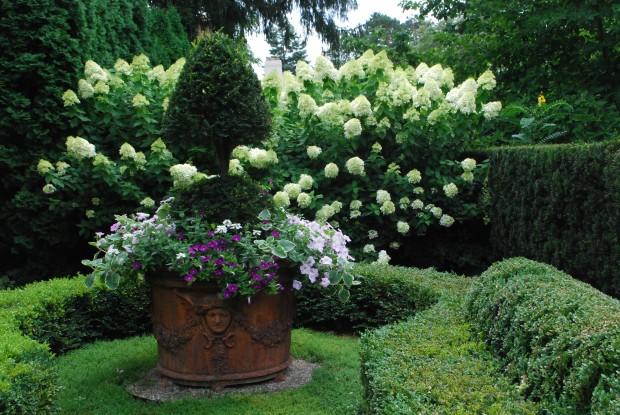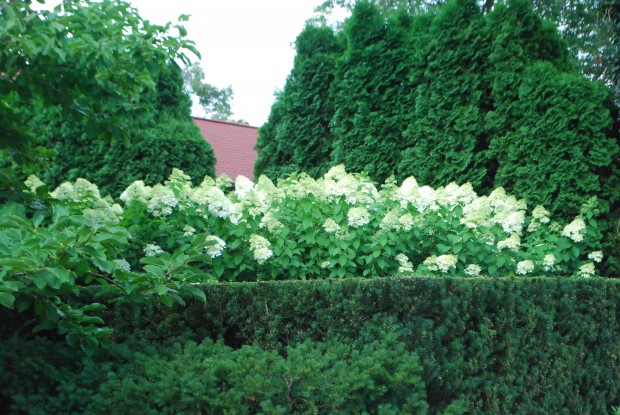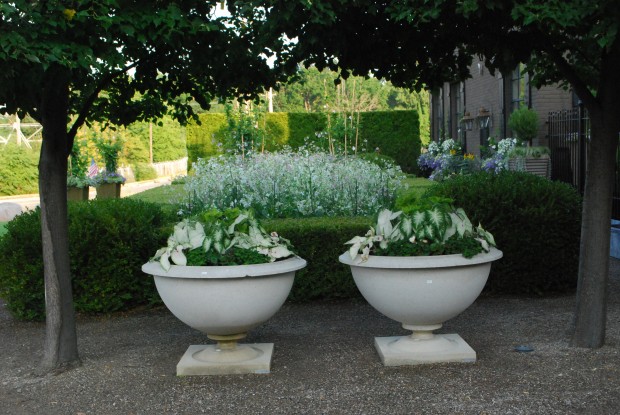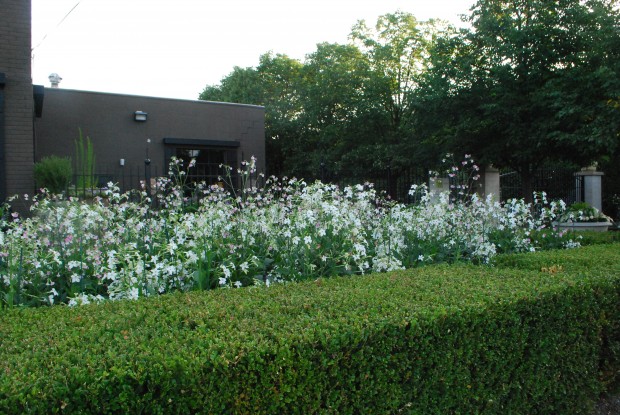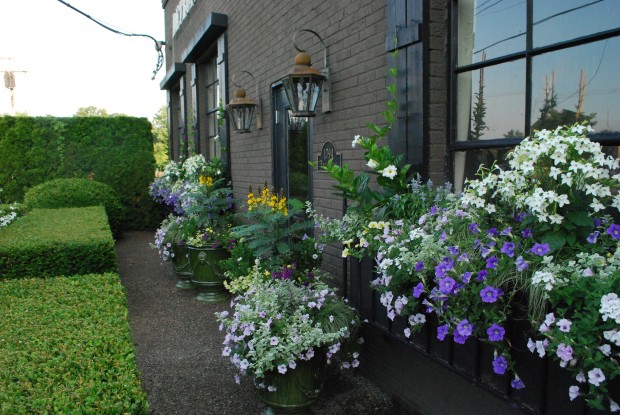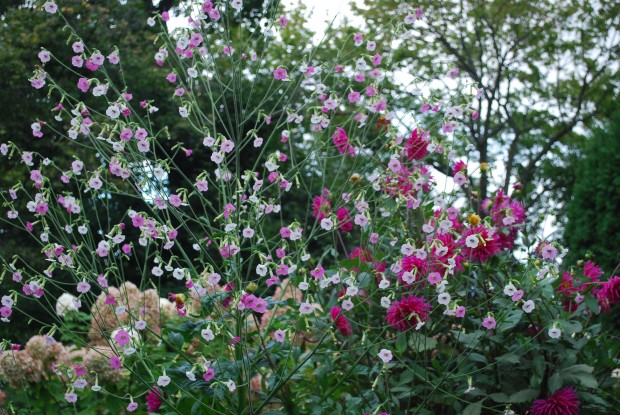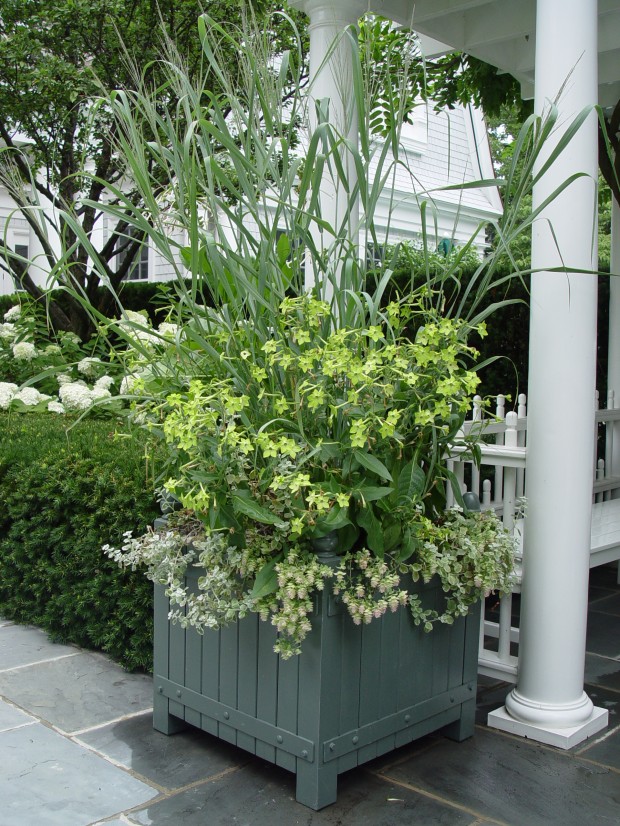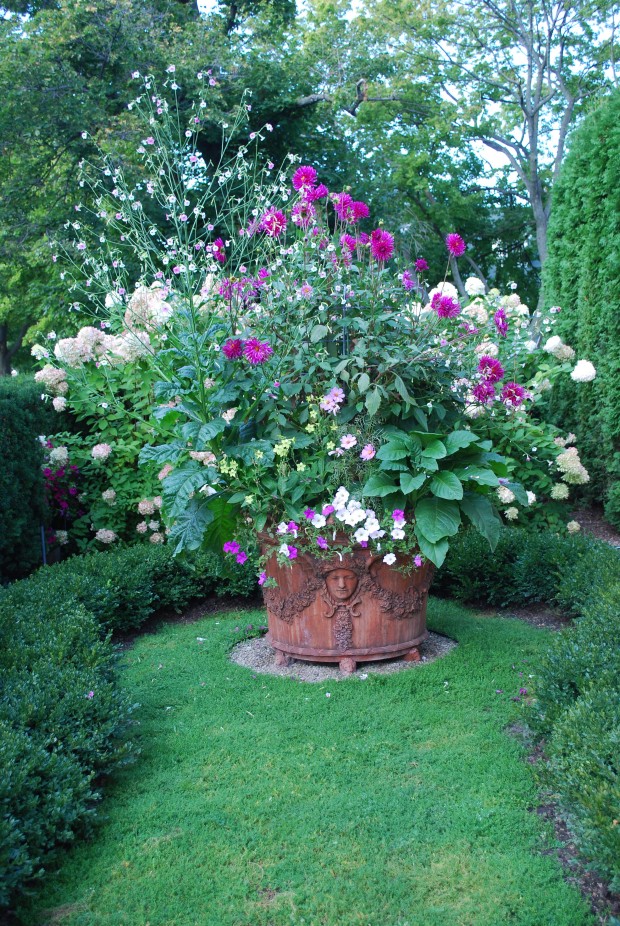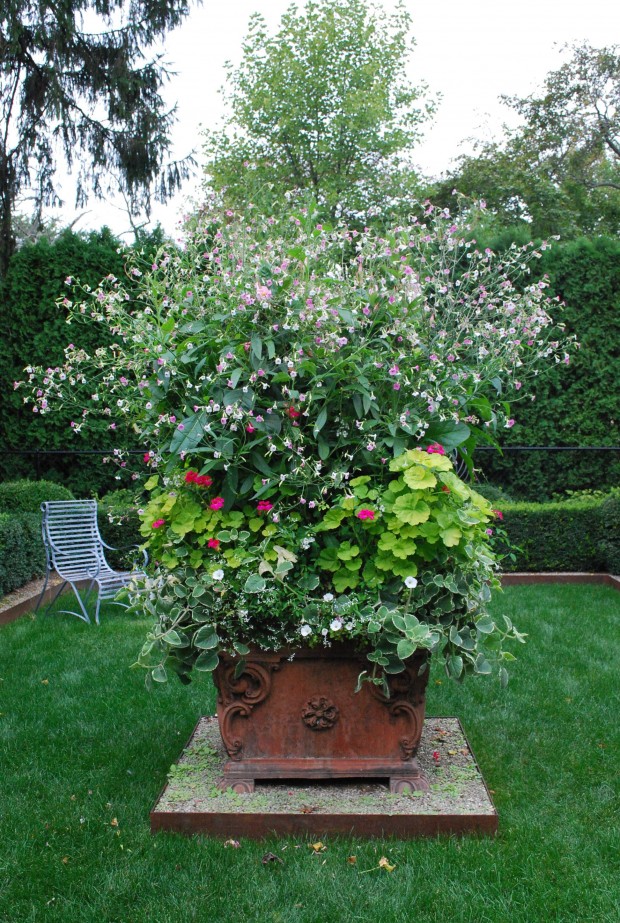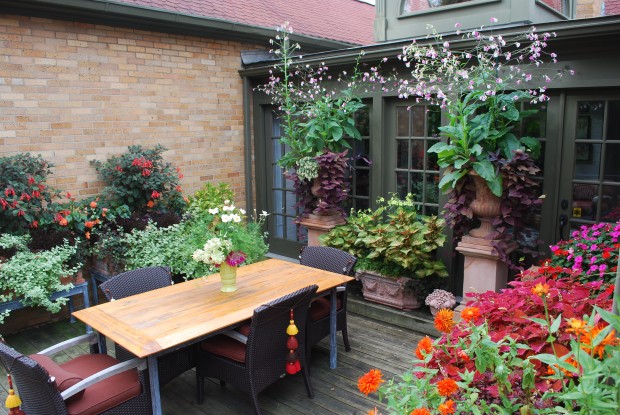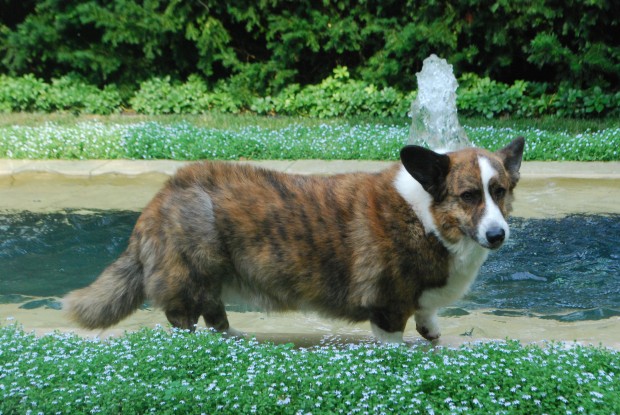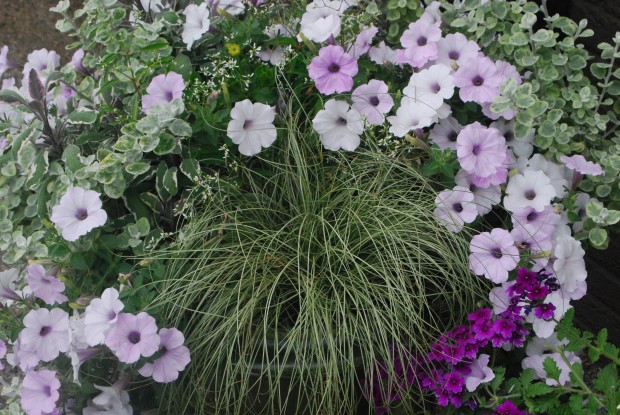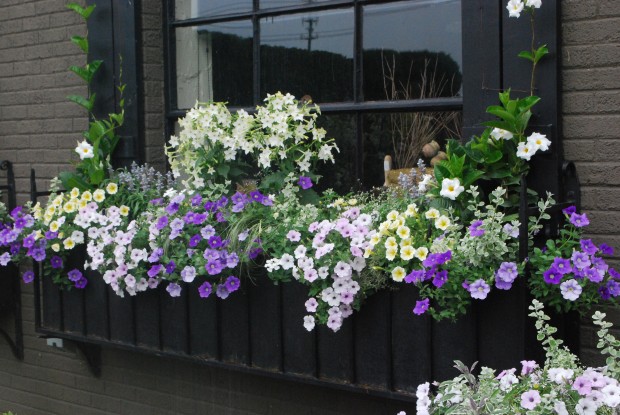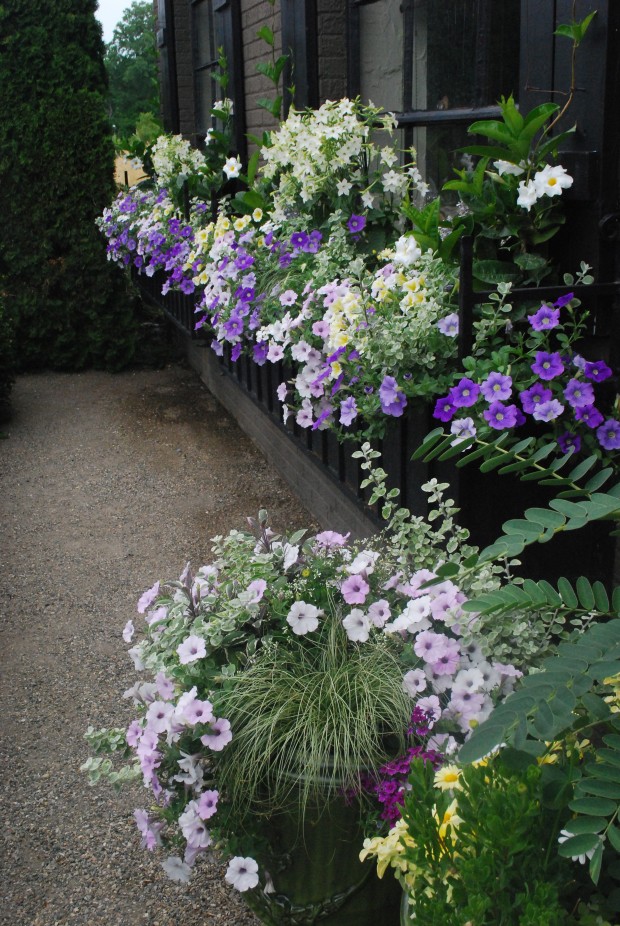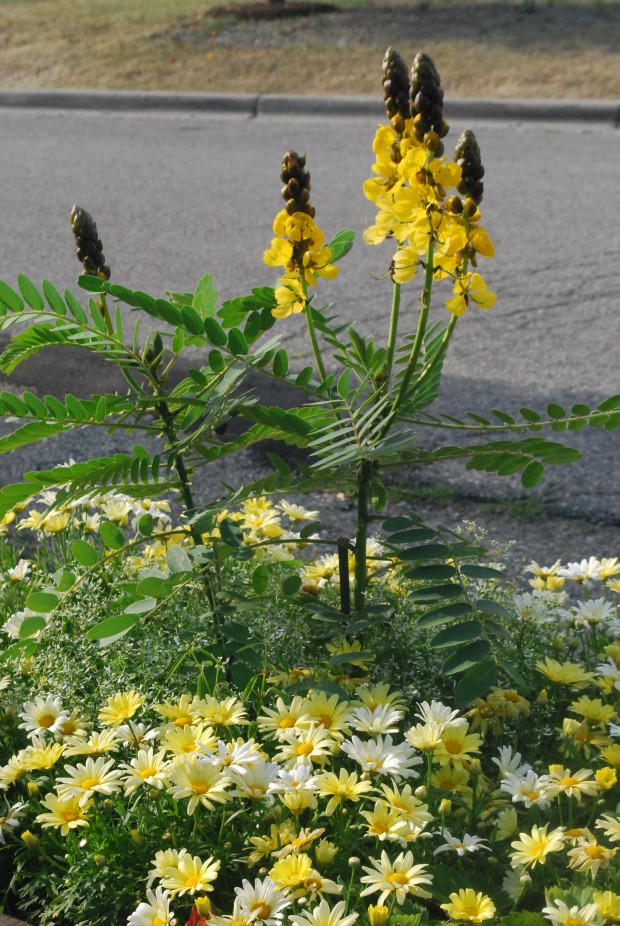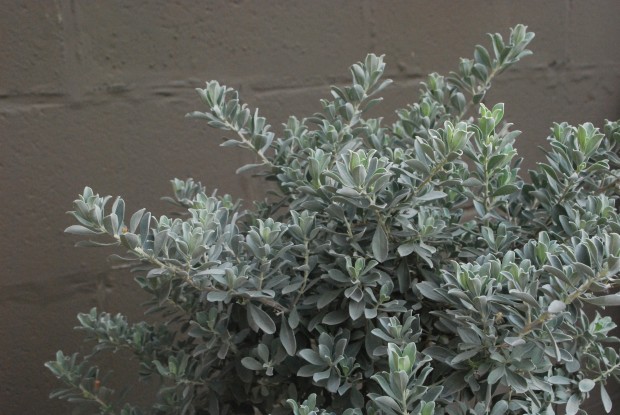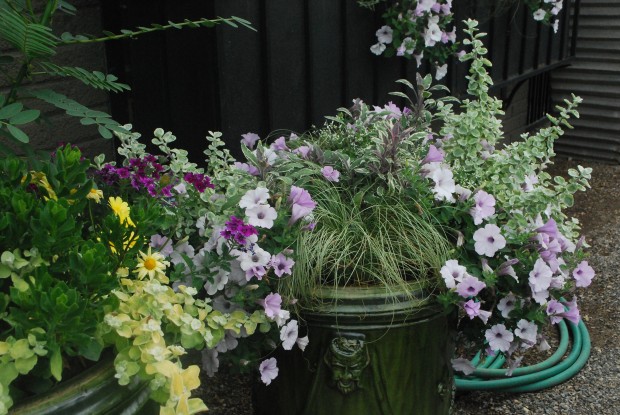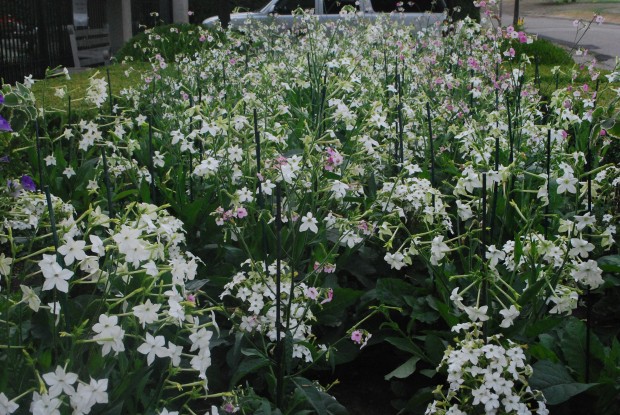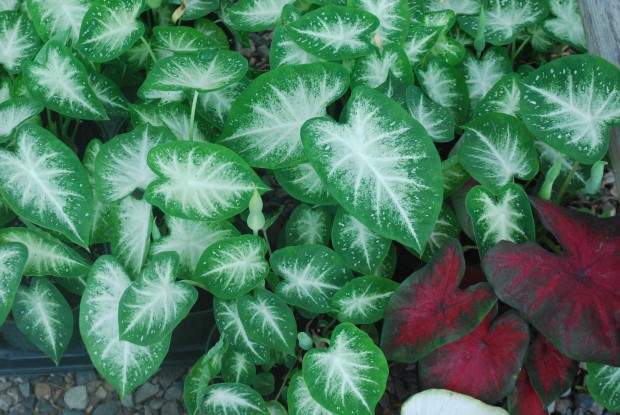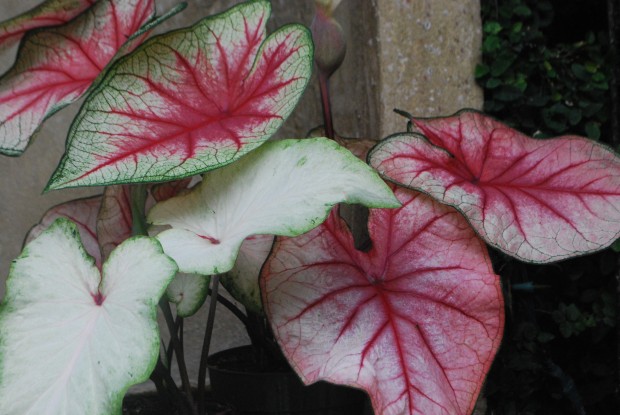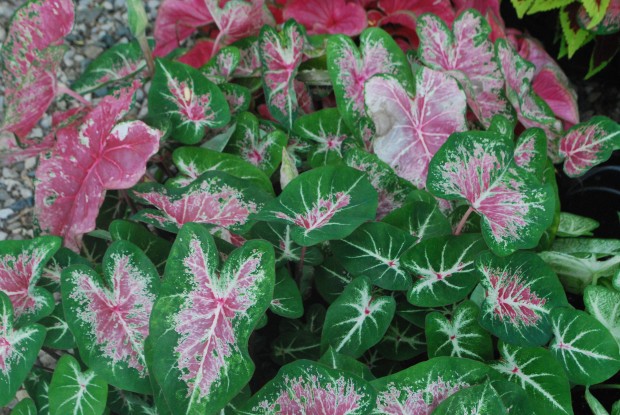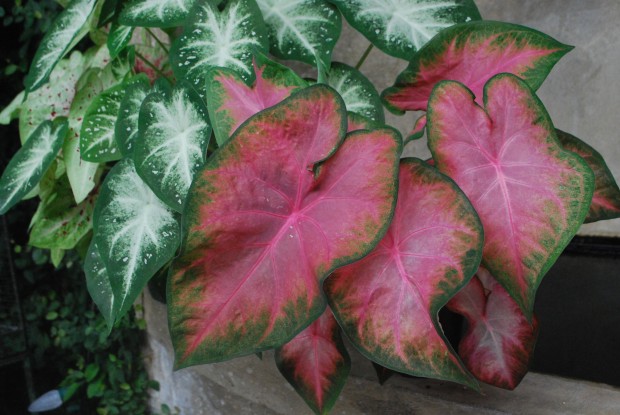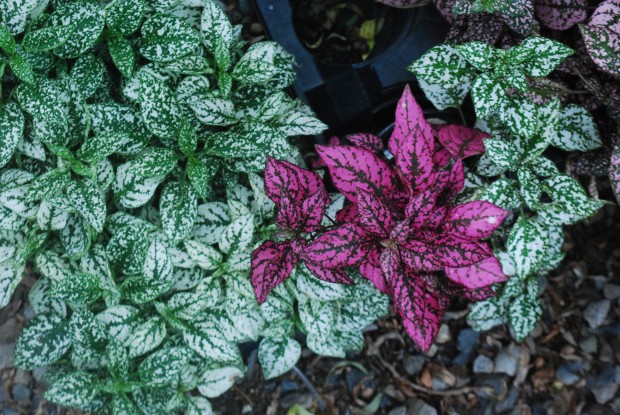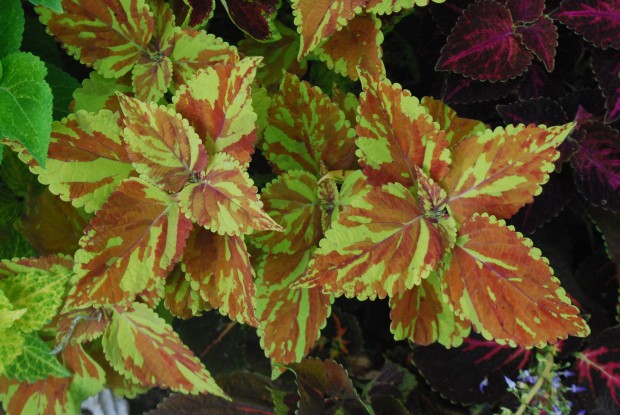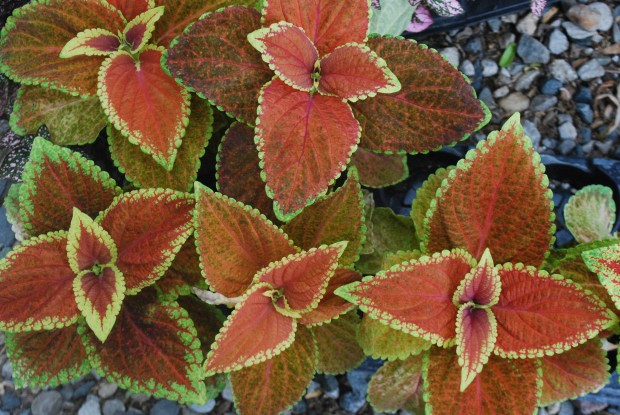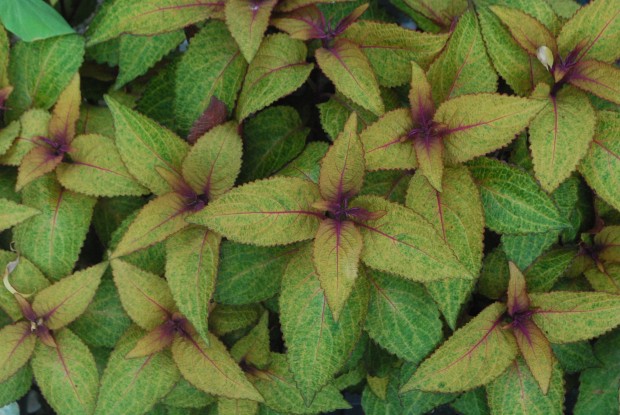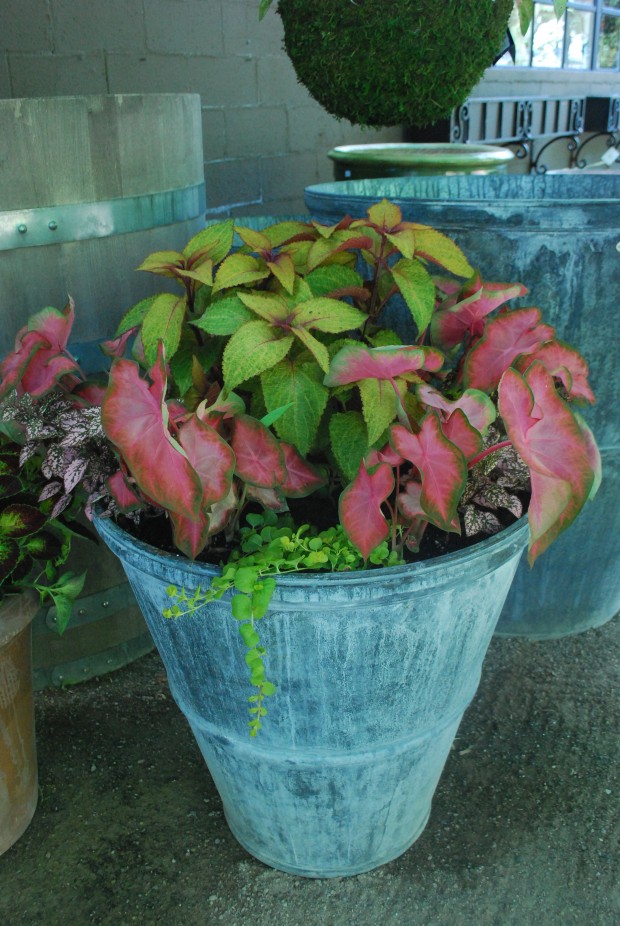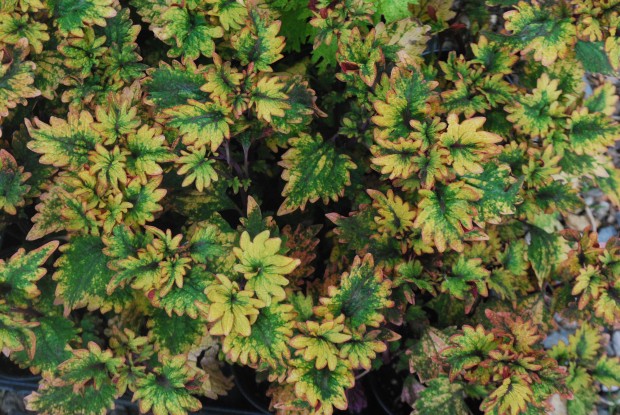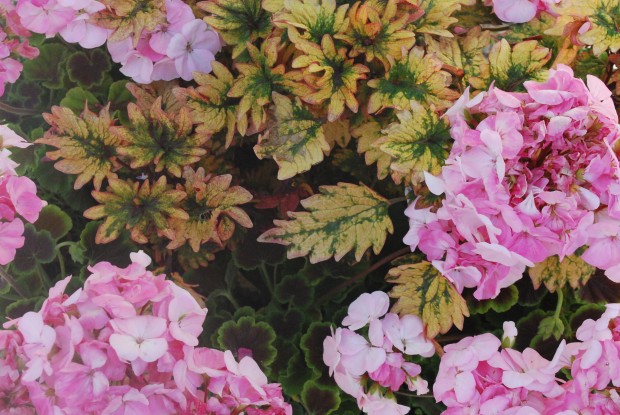Summer blooming hydrangeas appeal to almost every gardener. Each flower head is substantial. Comprised of hundreds of tiny florets, a single cut stem is a bouquet that celebrates the beauty of the summer season. One shrub in full bloom delights the eye. There are no end of cultivars-some white, some pink, some blue on occasion. They are broadly tolerant of a variety of conditions, but appreciate their fair share of sun, space, and water. I plant Limelight hydrangeas, and the new dwarf version, Little Lime, more than any other variety. They are vigorous growers, and bloom reliably.
My zone is a little too chilly and unfriendly for a good many hydrangeas. This is just me talking, but I only have one westside client who has been successful in growing blue hydrangeas. Her success is a mystery to me. The pink flowering varieties, available in my zone are easy to grow, but so reluctant to bloom. Sporadic bloom on a sizeable shrub makes me look like I don’t know how to garden. My clients on the east side of the metropolitan area have no problem cultivating pink and blue hydrangeas. I can’t help but think Lake St. Clair mitigates seasonal extremes.
I am satisfied to grow the hydrangeas that do well in my area. This means Annabelle,and Limelight. White hydrangeas, these. They are easy to grow, and so willing to bloom. Come June, the Annabelles delight every gardener with their snowballs. My favorite place to site them is on a slope, as they are stubbornly floppy in habit. Come the first of August, the Limelights transform the garden. 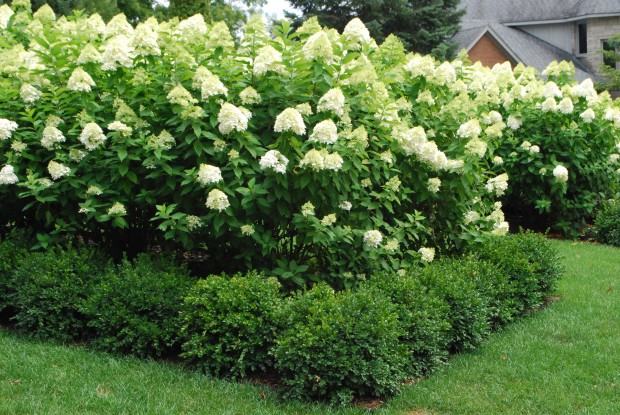
Their greenish white conical flowers develope over a period of a few weeks. Chubby, luscious, and very large, the showy flowers dominate the summer landscape. I have 25 or 30 of them in the ground at our landscape yard. They are planted in gravelly soil, and make due with whatever water comes from the sky. They are a quarter of the size of these plants; the flowers are tufts. Plant hydrangeas in compost enriched soil that gets regular water.
Large growing hydrangeas can be stalky-leggy. Skillful pruning in the early spring can help keep them green and blooming to the ground. But a good underplanting gives them a very finished look. I like to face down most large growing shrubs with a smaller growing shrub or perennial. Boxwood does a great job of concealing those inevitably gawky Limelight legs. They do a better than great job of giving the hydrangeas some winter interes
This block of limelights is wedged in between a hedge of yews, and an L of boxwood. In a different, cooler, and more rainy summer, the tops of those yews would be dark emerald green, rather than the color of toast. But the lime green second flush of growth on the boxwood is a beautiful textural contrast to the hydrangeas. No legs on display here.
I prune my hydrangeas as soon as the buds swell in the spring. I give them a shag haircut, by shortening the long branches on the top. I rarely prune the bottoms. Heading back the long top branches allows light to reach the bottom. Good foliage and flowers requires good light. It is so easy to see in this picture that the heaviest bloom is occurring where there is the most exposure to light.
Limelights can be pruned as low as 24″-30″ in early spring. Hard pruning produces fewer, but larger flower heads. I prune my hydrangeas lightly, as I like them tall, and I like lots of flowers. They make a beautiful backdrop for this pot in August. They hydrate the look of my summer landscape.
My blocks of hydrangeas are sequestered behind a pair of yew hedges-one formally pruned, another left shaggy. Thuja nigra backs them up, and sets off the white flowers to good advantage. This is the juciest moment I have had to date in my garden all season-you bet I am enjoying them.


